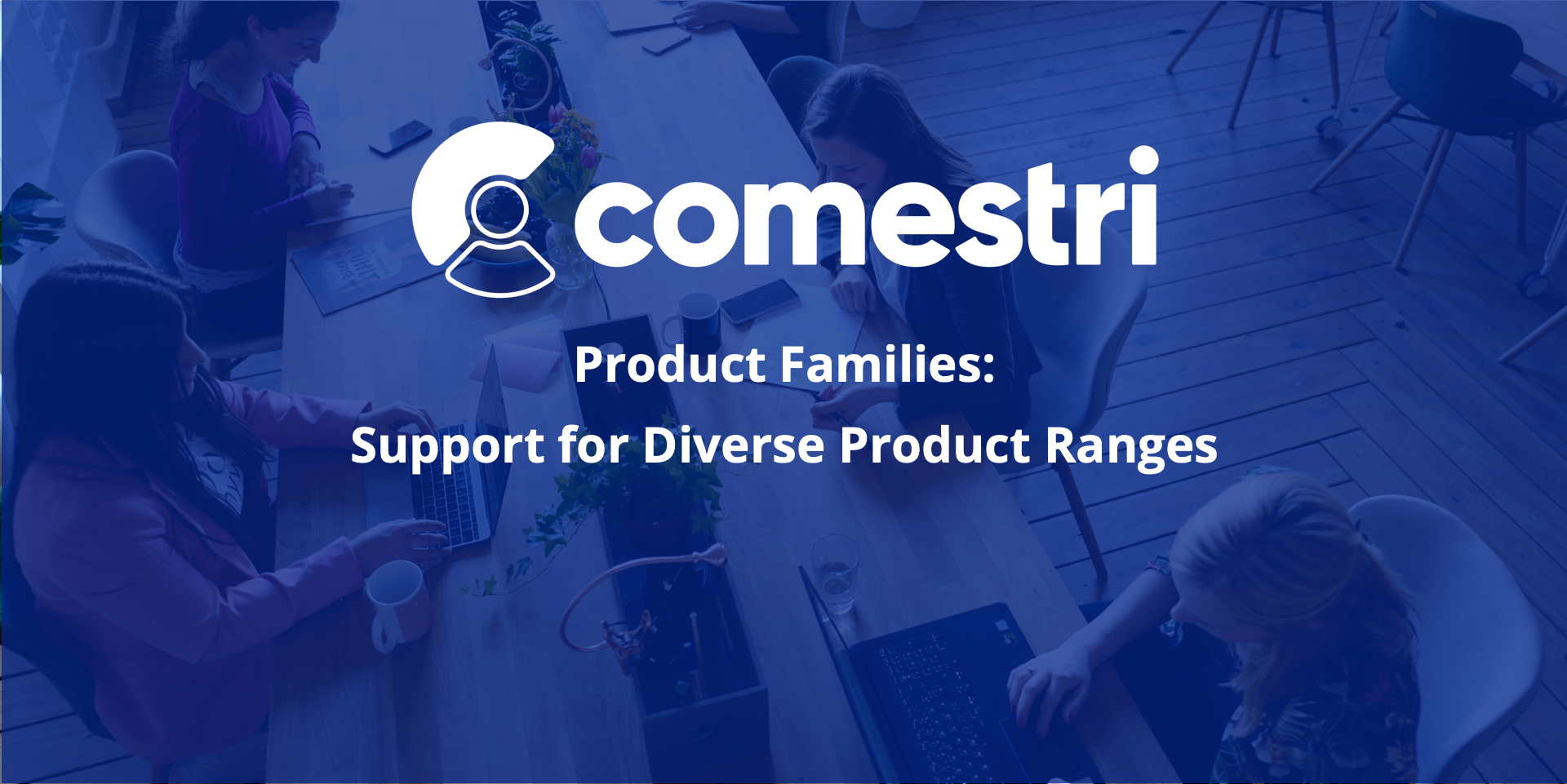If you’re selling a wide variety of products, or you’re thinking of introducing new product types to your existing range, then Comestri’s Product Families should be on your radar.
Product Families are a new PIM feature that allows you to associate multiple Attribute Groups with a large assortment of products that share the same Product Class Structure.
Each Product Family represents a particular type of product; for example, Women’s Dresses, Men’s Shirts, Baby Wear or Footwear.
The great benefit of Product Families is that they allow you to re-use a single Product Class Structure to support a wide array of products with different Attribute requirements.
For instance, using Product Families, products as diverse as women’s dresses and footwear could share the same three-level Style-Colourway-SKU Product Class structure, but use different product-specific Attribute Groups. Women’s dresses might require an Attribute Group called “Core Dresses”, which contains Attributes like “Neck”, “Body Shape” and “Occasion”. Footwear, on the other hand, might use an Attribute Group called “Core Footwear”, which includes Attributes like “Shoe Style” and “Heel Height”.
So how do Product Families work? Setting up a Product Family means you are creating a place where you can associate a particular Product Class Structure with selected Attribute Groups. In effect, the Product Family “holds” the different Attribute Groups at the Product Class levels you have specified.
When you create or edit a product, you assign a Product Family to it. The product then inherits only the Attribute Groups (and the Attributes they contain) that have been assigned to that product’s particular Class level by the Product Family.
Here’s an example of a simple Product Family for apparel:

Up until now, Comestri required you to directly assign Attributes to Product Classes. This meant that products inherited all the Attributes assigned to their particular Product Class level. In contrast, Product Families allow you to re-use a Product Class Structure because all Attribute Groups are “held” in Product Families, where they are associated with particular Product Classes, but the Attribute Groups are not directly assigned to Product Class levels.
In short, Product Families help streamline product management, making it easier for you to enrich and expand your product range to achieve your growth goals.
